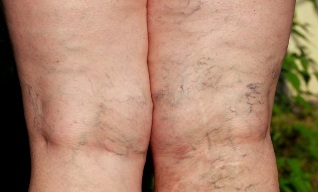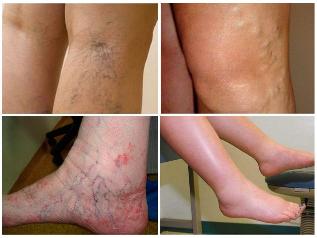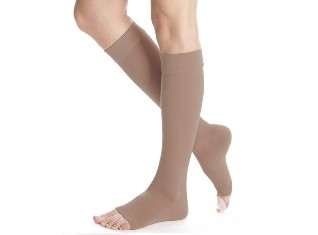Varicose veins of the lower extremities is a chronic disease of the veins, which is characterized by the thinning of their walls, the extension of the body, as well as the education aneurysm-sicut nodes. Most often, the varicose disease affects the lower extremities; it is one of the most common diseases – it affects approximately 40% of women and 20% men.

Causes and risk factors
Through the veins of the lower limbs that the blood flows upwards, that is to say, has to overcome the force of gravity. This current ensures that the pressure located in the vicinity of the veins of the tendons and the residual of the blood pressure. The movement of the blood through the veins of the lower extremities promotes and "pump": when the movements of the muscles of the legs to contract and tighten of vienna, placebat ei pulsare for both is found in them the blood upward, since the inverse current preventing venous valves.
The weakness of the muscular layer of the venous walls and the failure of the apparatus is converted into the reason that under the influence of the actions of the muscle pump," the blood begins to flow in the opposite direction, i.e. down. This leads to an increase of the pressure on the walls of the blood vessels, favoring the progression of the insufficiency of the valves, the extension of the light of the veins, and the education of the nodes. The muscle fibers of vein walls is atrophied, it disturbs the work of the nervous system receptors that regulate venous tone, which, in turn, reinforces the manifestations of the venous insufficiency.
Risk factors for the development of the varicose disease of the lower extremities:
- hereditary predisposition;
- pregnancy;
- obesity;
- journal of a long stay in a sitting position or standing;
- the activities related to the raising of weights;
- systematic use of the clothing close, the corss;
- poor diet lack of content in dietary fiber and vitamins;
- the violation of hormonal status.
In the prevention of varicose disease is quite big plays the active role of the following occupations: sport (swimming, cycling, gymnastics), dance, hiking, etc
The forms of the disease
On the basis of the characteristics of the clinical manifestations, are distinguished the following forms of varicose veins of the lower extremities:
- segmental defeat intradermal and veins saphenous with the absence in them of a return of the hemorrhage;
- segmental of the defeat of the veins of the lower extremities, accompanied by a blood stream;
- common the defeat of the vessels with the inverse of the power of the blood of the superficial veins;
- common the defeat of the vessels, accompanied by a restoration of the blood by the system of the deep veins.

The stage of the disease
In the year 2000 Russian phlebologists adopted the classification of the varicose disease of the lower extremities, taking into account the form of the disease, the degree of venous insufficiency, the presence or absence of complications. Under it there are three stages of the varicose disease of the lower extremities:
- The phase compensation. Patients do not present any kind of complaint. To perform inspection in one or both feet to detect surface-located varicose veins.
- The stage of subcompensation. Patients complain of night cramps, disorders of skin sensitivity (paresthesia) in the legs, feeling of extending the arms. In the night, often observed swelling of the shins, ankles and feet, disappearing after a night's sleep. During the inspection of the feet are well visible, advanced varicose veins.
- The phase of decompensation. Of the above-described reasons, unite eczema, dermatitis. Leather with pigment spots, dry, bright, firmly bound in the subcutaneous cellular tissue.
The symptoms of the
The clinical presentation of varicose disease of the lower extremities is determined by the stage of the disease. Thus, the mode of the stage is the only symptom of venous insufficiency, with the appearance of leg spider veins (telangiectasias).
The transition of the disease in subcompensated stage is accompanied by the appearance of pain in the legs, swelling of the stop and of the ankles, cramps in calf muscles. After resting in a horizontal position, these symptoms will disappear.
The most brilliant, the clinical picture of varicose veins of the lower limbs is manifested when decompensated stage of the disease. The pain in the feet become permanent. The patients complain of itching of the skin, which is worse in the evening and the night. With time, occur dermatitis, eczema, hardhealed ulcers trophic. In the so-called phase are frequent symptoms in common: dizziness, low blood pressure. Relate to the deposit in the improvement of the venous network of the legs of large volumes of blood.
A complication of the varicose disease is phlebitis, thrombophlebitis, bleeding from varicose veins, ulcers trophic, pulmonary embolism.
The diagnosis
The diagnosis of varicose disease of lower extremities presents no difficulties. Is performed on the basis of characteristics of the clinical signs of the disease, and the audience data of the inspection.
For the evaluation of the severity of the violations of hemodynamics apply diagnostic tools:
- Doppler ultrasound of the veins of the lower extremities;
- duplex angioscanning;
- rheovasography of the veins of the lower extremities.

The treatment of the
In the treatment of the varicose disease of the lower extremities of the indications apply to the following methods or a combination of them:
- the conservative therapy;
- sclerosing therapy;
- the surgical intervention.
Conservative treatment of varicose disease is of the lower extremities can be recommended to patients in the early stages of the disease, its goal is the prevention of the progression of chronic venous insufficiency. It is also applied in subcompensated and decompensated stages of the disease in the period of preparation of the patient to the interventions operational or in cases in which the use of other methods is contraindicated. Conservative therapy varicose veins is based on the application phlebotonics, porte compressive. In addition, the patients, it is recommended to perform physiotherapy exercises, to avoid long static loads.
In varicose veins of lower extremity, not complicated significant violations of hemodynamics, can be used compression sclerotherapy. The essence of the method consists in the competition in the contaminated area of the vein of the drug, call your spasm. After this, the leg is put on (compression or perform medical tape on the leg, elastic bandage, which allows you to keep the vein wall in the dormientes state. To the few days begins the process of pasting the wall of the veins. Compression garment must be worn after sclerotherapy is not less than a month and a half, up to the time of education between the walls of the vein, just adhesions.
In the stages of the varicose disease is of the lower extremities, the most effective method – surgery. Operating methods technical they are chosen in function of the stage of the disease, its form, the characteristics of the violations hemodinmicas:
- coagulation by laser;
- radiofrequency coagulation;
- miniphlebectomy;
- the phlebectomy.
The possible complications and effects
The complications of the varicose disease occur mainly in the phase of decompensation. Them concern:
- phlebitis (inflammation of the extension of the vein);
- thrombophlebitis (inflammation of a vein with the education in their lumen of blood clots);
- the bleeding of the varicose veins;
- ulcers trophic;
- pulmonary embolism (pe).
Most often, the varicose disease affects the lower extremities; it is one of the most common diseases – it affects approximately 40% of women and 20% men.

Prognosis
The prognosis of varicose disease of the lower extremities during the treatment of early favorable.
The prevention of the
In order to prevent the varicose disease of the lower extremities should be avoided long static loads. If the job requires a prolonged stay in a standing position or seated on a periodic basis, you must make pauses in a small gym, or at least walk. After the work day, it is recommended to lie down, giving feet horizontal or in exalted position.
In the prevention of varicose disease is quite big plays the active role of the following occupations: sport (swimming, cycling, gymnastics), dance, hiking, etc






































